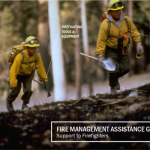DENVER – State and federal officials have scheduled meetings with local governments and other entities in Adams, Boulder, Park and Denver Counties to help them apply for federal assistance for this spring’s storms.
The Colorado Division of Homeland Security and Emergency Management (DHSEM) in cooperation with FEMA has scheduled Applicants’ Briefings August 25 to August 27 to help local governments, state agencies, and certain private non-profit organizations navigate the federal Public Assistance application process relative to this spring’s declared disaster.
On August 12, Adams, Boulder, Park and Denver Counties were added to 11 other Colorado counties that had already been declared eligible for damage reimbursement as a result of the severe storms, tornadoes, flooding, landslides, and mudslides that occurred between May 4 and June 16, 2015.
Applicants’ Briefing Schedule:
Park County: August 25, 1:00 p.m., Park County Emergency Operations Center, 911 Clark Street, Fairplay, CO 80440
Adams County: August 27, 8:30 a.m., Adams County Government Center, Conference Center – Platte D, 4330 S Adams County Pkwy, Brighton, CO 80603
Boulder County/statewide: August 27, 1:00 p.m., Colorado State Emergency Operations Center, 9195 E Mineral Ave., Centennial, CO 80112
Denver County: TBD
The briefings are the next step in FEMA’s Public Assistance Program and will provide information on the application process as well as deadlines for submission of necessary documents.
The Applicants’ Briefing may be followed by face-to-face meetings in local communities between FEMA/DHSEM officials and eligible applicants.
The disaster declaration issued by President Obama on July 16, 2015 for Baca, Elbert, El Paso, Fremont, Logan, Morgan, Pueblo, Saguache, Sedgwick, Washington, and Yuma counties made state, county, and local governments, as well as certain non-profit organizations, eligible to receive reimbursement for repairing infrastructure damage caused by the storms, as well as the cost of responding to them.
Qualified organizations in these counties and the four newly declared ones will receive no less than 75 percent of their eligible costs incurred as a result of the disaster.
###
Colorado DHSEM’s mission is to provide leadership and support to Colorado communities to prevent, protect, mitigate, respond and recover from all-hazard events including acts of terrorism.
FEMA’s mission is to support our citizens and first responders to ensure that as a nation we work together to build, sustain, and improve our capability to prepare for, protect against, respond to, recover from, and mitigate all hazards.
Read more:




